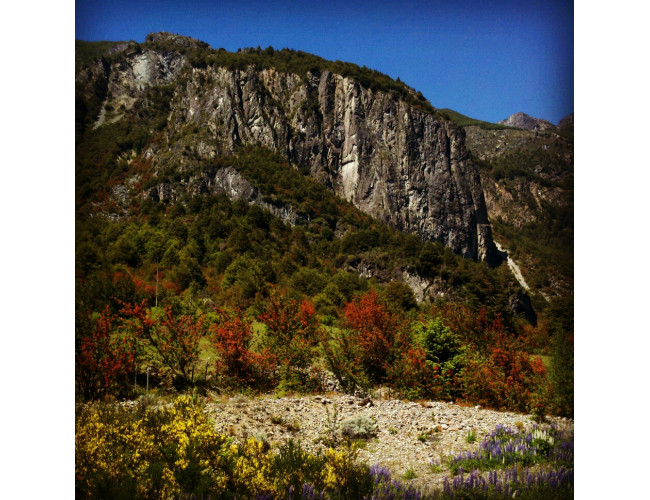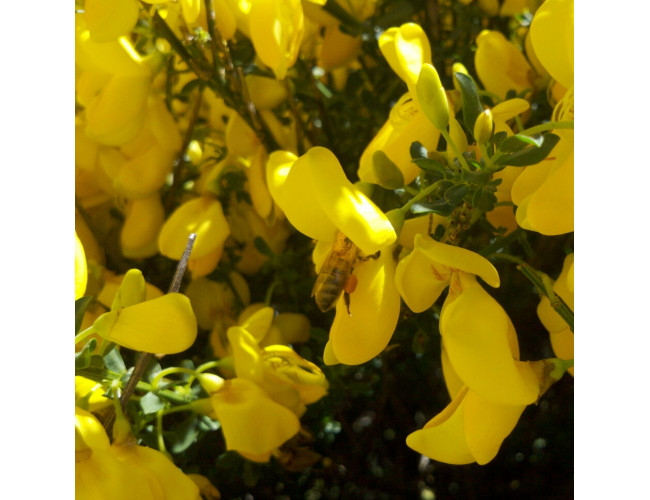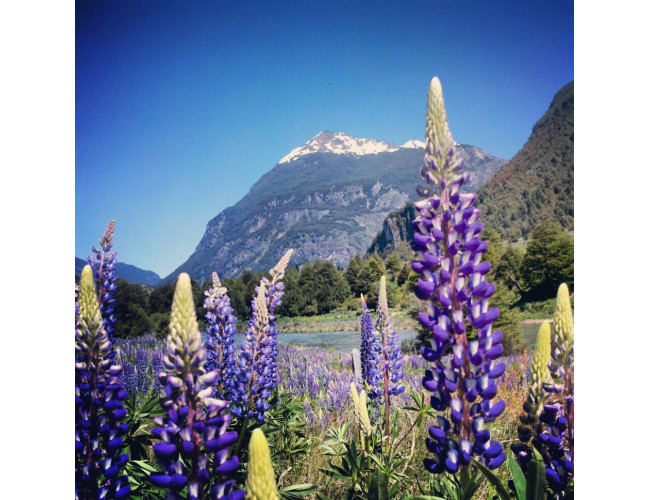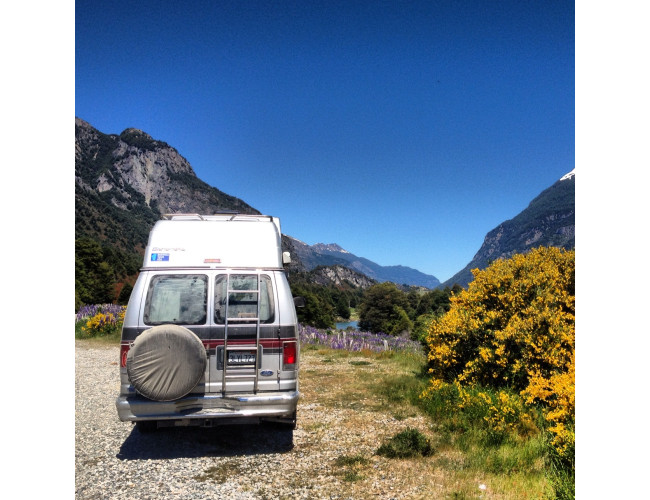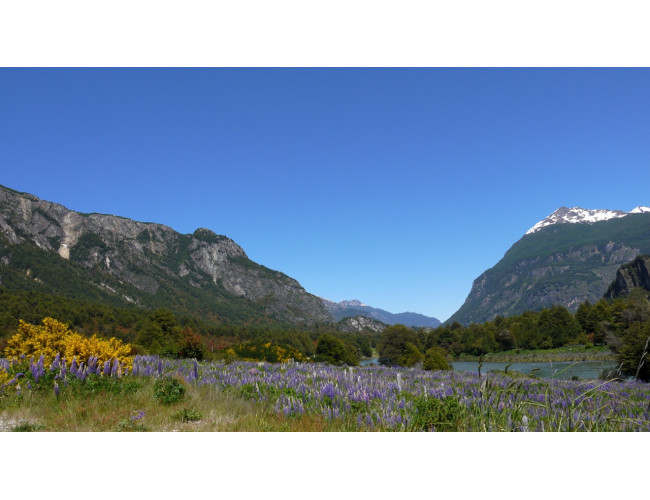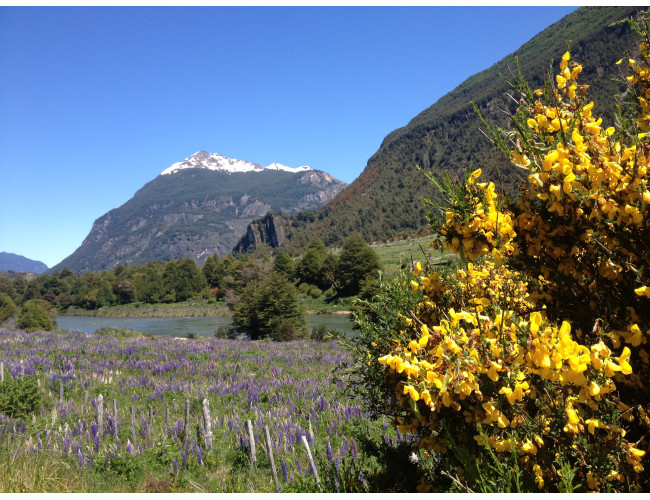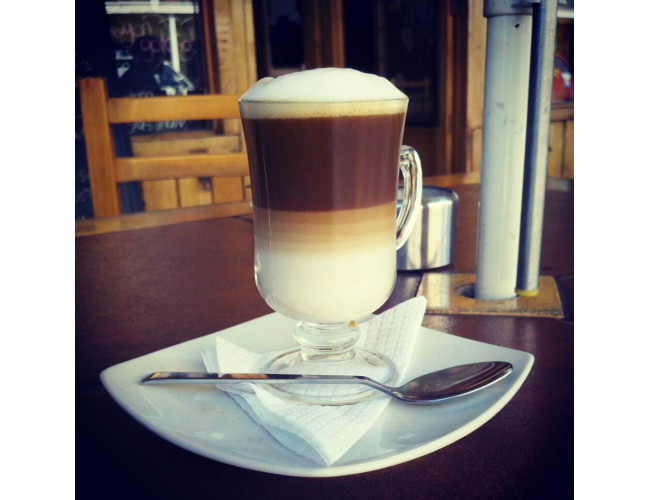Carretera Day 3: Villa Amengual to Coyhaique
Waking up before the sun comes over the mountains we see the lake we’ve camped by is small and calm, surrounded by snowy peaks on all sides. We make breakfast, chat with a Chilean architect out fishing for the day who gives us advice on our route, and hit the road into Coyhaique—the largest city of the area—for supplies and WiFi.
During this portion of the drive the narrow valleys and high cliffs open up into farmland and pastures still surrounded by tall mountains. There is a rainbow of wildflowers—yellow, purple, pink, white, red, orange—all along the route and the air is fresh and pleasant smelling. We eventually make it up and over the mountain pass and wind down into Coyhaique, a surprisingly big settlement for this far south.
Once in the center of town we head to a cafe where we learn that the boat we are scheduled to leave on is not going to United States after all. We consider panicking, thinking we’ll never get home with the campervan, and but instead start looking for alternatives, and finding none.
When you ship a vehicle as large as ours, one that is too tall to fit into a standard shipping container, you have to use what is know in the shipping industry as a RoRo ship (Roll On, Roll Off). While these ships head from North America to South America all the time with new cars, construction equipment, and farming implements, the number of ships going in the other direction is very limited seeming to depart only from Cartagena, Colombia, and a few ports in Argentina and Brazil. The ships that travel down the west coast head across the Pacific before heading north, completing a circle instead of travelling along the same route from north to south.
We put together a document titled Bertha’s Return Voyage to track all of our options and after working on it for a while head to the grocery store. What we find is the first mega super food store we’ve seen since being in the States. It is hectic and people are buying a lot of processed meat, cheese, and dairy products. We watch the appropriately named grocery bagger putting large plastic bags containing smaller plastic bags of food into double plastic shopping bags before giving it to the woman in front of us. After being out in the middle of nowhere it’s a jarring jolt back into consumer culture and its wastes.
With groceries in tow we head back to the town square where we are parked. It’s a warm Friday night and the square is packed with people enjoying the evening. We get in the car and head out to look for tonight’s camping spot, but when we arrive at the National Park just north of town the night guard tells us that he can’t let anyone in. His primary job duty is to not let people in after dark, as they only offer “day camping” — a Chilean activity that would probably be referred to as picnicking or grilling in the United States, and which makes finding a place to sleep tricky at times. Denied, we head back to town to find a nice residential street, put the window shades on, and stealth camp.
